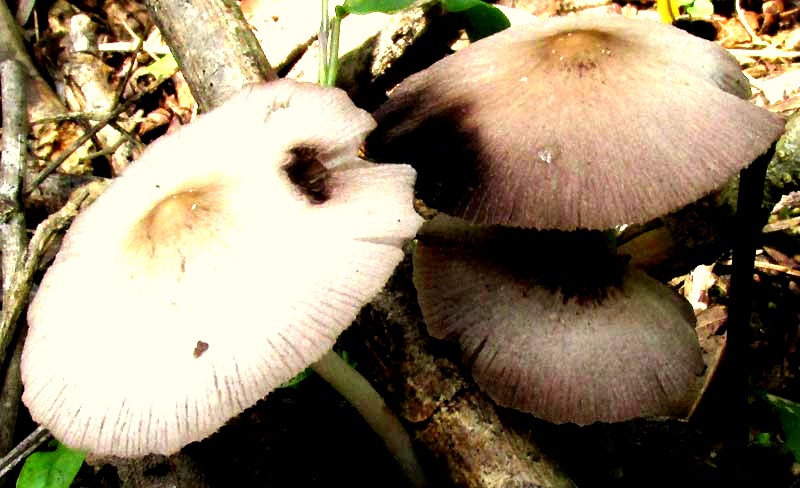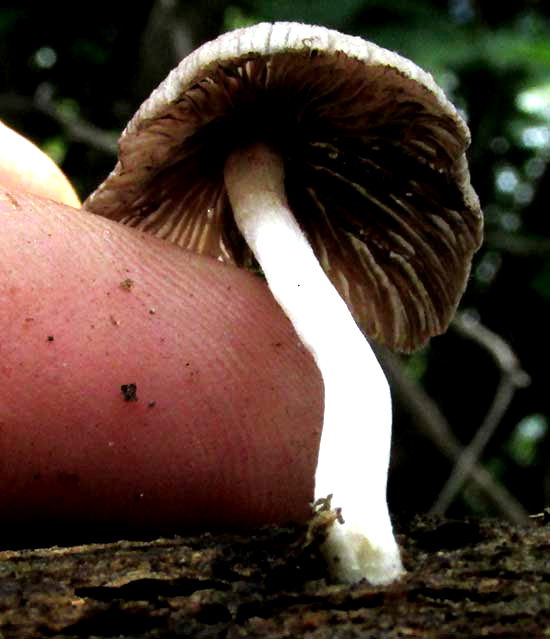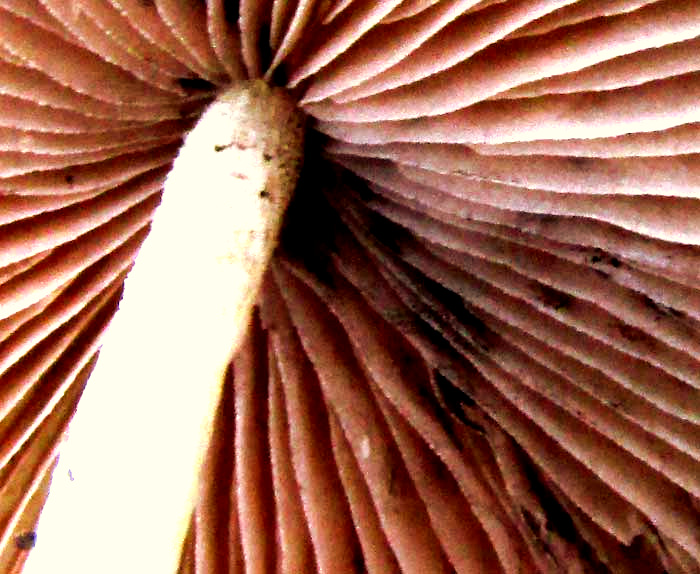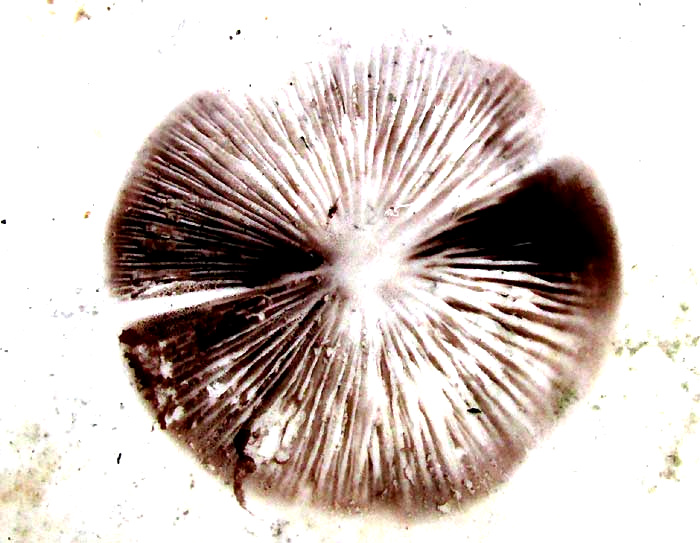Excerpts from Jim Conrad's
Naturalist Newsletter
Entry issued on August 11, 2019, from the forest just west of Tepakán; elev. ~9m (~30 ft), N21.053°, W89.052°; north-central Yucatán state, MÉXICO
PSATHYRELLA MUSHROOM
In early morning after a heavy rain the previous afternoon, some somewhat violet-hued mushrooms turned up overnight along the forest trail, shown below:

The caps were no more than about two inches wide (5cm), mostly much smaller, but for the overall-arid Yucatan with its relatively limited mushroom population, these were the largest mushrooms seen for awhile. And they were wood decomposers, as shown below, one arising from a twig.

Besides its growing on wood and being small -- that's my finger nudging in from the left -- other very important field marks seen in that picture include the absence of a ring, or annulus, encircling the stem just below the cap, as well as the lack of a cup, or volva at the very base of the stem. A feature not showing, but which I shall now report, is that the stems are exceedingly fragile and tend to break/shatter easily. Another important feature is shown below:

Where the cap connects with the stem, the gills do not at all descend the stem. In fact, they rise up a little before meeting the stem, though they form a conspicuous "notch" as some species do. Finally, a spore sprint showed the spore color, seen below:

Actually, I already knew the spore's color because as you can see in our top picture the cap at the left had dumped a healthy coating of spores stop its neighbor's cap, and they were dark brown.
Michael Kuo of MushroomExpert.Com offers a very useful Key to Dark-Spored, Gilled Mushrooms. The key focuses on North American temperate species, but sometimes its genera embrace species in the tropics, and I think that that might be the case this time.
Whether it is or not, our mushrooms key out to the genus PSATHYRELLA, which Kuo describes as having long stems that snap in two easily. Also, the fragile cap often splits with age, as the cap did for my spore print. Psathyrella species illustrated on the Internet are similar to ours, and the spore color fits perfectly.
But, mushrooms here are poorly studied. Who knows?